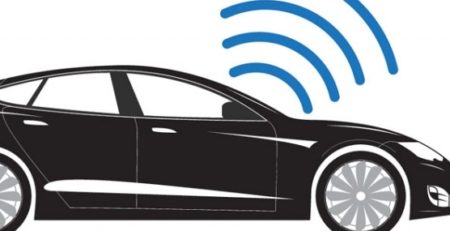The writing’s on the wall—make that on a big digital road sign: the commercial vehicle telematics market is exploding. MarketsandMarkets expects it will be worth $47.58 Billion by 2020. While the ELD mandate is upping the adoption of telematics solutions, growth is happening because business owners, operations leaders, and fleet managers are embracing their many benefits related to costs, automation, safety, productivity…Let’s face it, fleet telematics solutions are a future-forward way to meet a variety of business needs.
C.J. Driscoll & Associates’ 2016-17 U.S. Mobile Resource Management Systems Market Study reveals that:
• Approximately 8 million GPS/wireless devices are used to manage fleet vehicles, trailers, construction equipment, and mobile workers
• By 2019, this market will expand to over 14 million units and annual hardware and service revenues will grow to nearly $4.7 billion
• What’s more, growth has been particularly strong in the local service and delivery fleet market, where the use of commercial telematics solutions is growing at an annual rate of 15-20%
The future is happening now, in real time. Looking ahead to next year, it’s clear what trends are going to keep the momentum going:
1. Mobile first adoption
With smartphone penetration skyrocketing and the numbers of IoT-connected devices rapidly increasing, this industry cannot be better positioned to build an ecosystem for businesses managing a fleet from their small screens.
The message is simple: users of fleet telematics solutions are working from everywhere and anywhere on their mobile devices and their vendors better deliver the goods. That’ll happen thanks to the mobile-first design approach, which will surely impact the development and availability of telematics tools and resources over the next year. Smart technology along with design and data-centric approach to telematics is enabling faster transfers and better user experiences.
2. Transparency and ease
End-to-end solution simplicity matters; simplicity is one of the reasons users of fleet telematics solutions pick up and plug into the technology in the first place. They value the time- and cost-savings associated with automation, so in the year ahead, it will be important for technology decision-makers to vet suppliers, access pricing information, and try solutions out before committing to making a purchase. In other words, no barriers should stand in their way of getting started. On that note, it should be just as easy to implement the technology (just plug it in!), sync it with other systems (e.g. dispatch management solutions) with open APIs, and start using the tools, pulling reports, collaborating with drivers, etc. The entire experience should be intuitive.
3. Predictive decision-making
Telematics solutions are part of a connected decision-informing ecosystem enabling you to optimize your data coming from different places—including your vehicle engines. Machine learning and the power of big data is going to push the boundaries of existing fleet telematics solutions and will take predictive analysis to a new level. That’s automatic decision making, folks!
4. Data accuracy
What good is data if it’s not actionable? If it’s not reliable? One of the reasons companies are investing in fleet telematics systems is the fact that they put vehicle data at their fingertips. Whether that data is accessed in real-time or delivered in the form of activity reports, businesses depend on the insights to make important decisions related to scheduling, spending, servicing, and much more.
You can be sure that as the fleet telematics tools evolve, they’ll become even more sophisticated in the way they collect and synthesize data. At Automile, we started out with a robust foundation and modern platform that helps us continue to build state-of-the-art solutions to help businesses solve fleet related challenges. This is key as legacy solutions may have a hard time keeping up with evolving and improved technology.
5. Better technology leading to lower cost solution
An article on Automotive-Fleet.com notes that despite some recent relief in fuel costs, a fleet’s total cost of ownership is going up, thanks to everything from higher vehicle acquisition costs to softening residual values. That’s not great news for fleet management budgets—unless, of course, managers make good use of tech solutions to make their jobs easier and more cost-efficient.
So the good news shaping the future is that the technology backing telematics solutions are inherently cost-efficient, and it’s becoming more so as the technology evolves and developers learn how to do “more with less.” For example, Automile’s solution features a SIM card in the telematics device so customers aren’t charged extra for data. And the way our data is structured allows for a tenfold decrease in data traffic costs.
The great news is that progressive businesses are already taking the step to embrace technology to drive their business results.
You may also like What ROI Should You Expect on fleet telematics for a deeper dive into how telematics technology is already helping businesses and what type of ROI do they potentially realize.
Read more at http://blog.automile.com/look-fleet-telematics-trends-2017/












